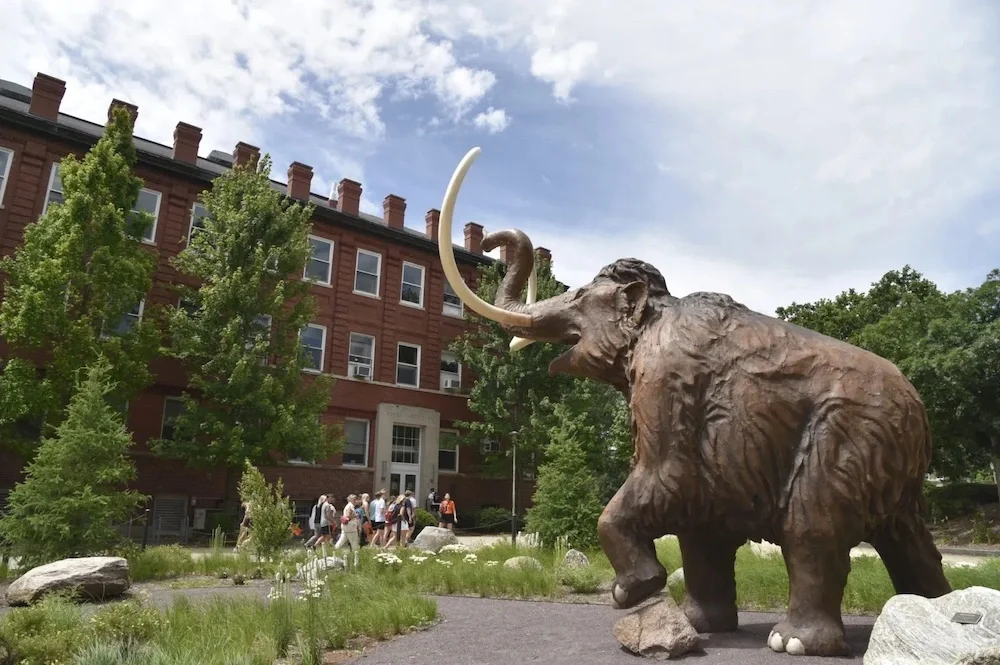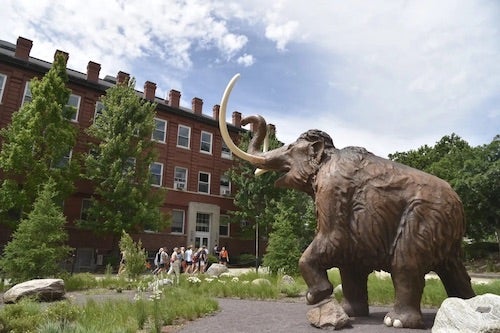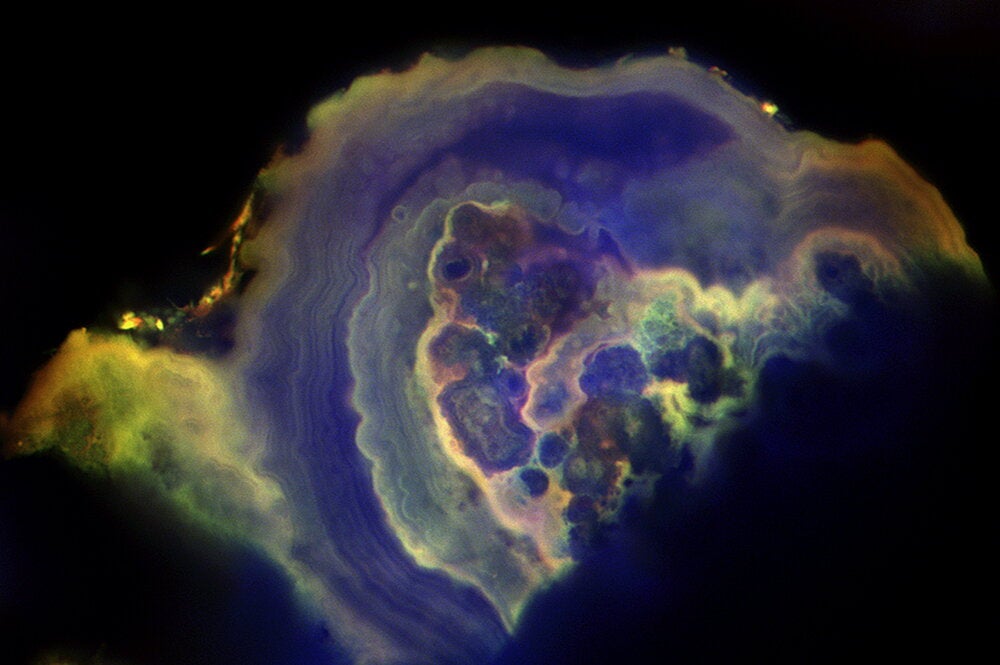

The mammoth sculpture, located south of the Natural History Building (NHB), and near the Main Quad where its ancestors wandered 30,000 years prior, finds itself amongst some new additions. The new thoughtfully curated landscape not only enhances the area but offers homage to the mammoth’s past.
The landscaping concept, termed a “Pleistocene Garden” by Stephen Marshak, professor emeritus in the Department of Earth Science & Environmental Change, features plants from the central Illinois landscape around 30,000 years ago, predating Illinois’ earliest human inhabitants, between the Illinoian glaciation and the Wisconsin glaciation.
Marshak, assisted by professor Sarangi Punyasena from the Department of Plant Biology at the Illinois State Museum, curated a list of appropriate plant types. Brent Lewis, the university landscape architect, then made the final selections, considering plants capable of thriving in today’s climate. Subsequently, Lewis designed the landscaping to authentically depict the mammoth’s historical environment.
Many plant species originally native to Illinois would no longer be suitable in the current climate.
However, several species remain native to Illinois or can thrive in the area. Native plants still
found include Symphyotrichum oblongifolium (Aromatic Aster), Liatris pychnostachya (Prairie
Blazing Star), Liatris spicata (Dense Blazing Star), Juniperus communis (common juniper),
Carex emoryi (Emory’s sedge), Carex vulpinoidea (Fox sedge), Carex brevior (shorbeak sedge),
and Dasiphora fruticosa (Shrubby Cinquefoil).

Among the species listed above, some are native only to Illinois, while others are native to both
Illinois and Champaign County. For example, common juniper is still native to Illinois but primarily in
the northern regions around Lake Michigan.
Larix decidua (European Larch) is no longer native to Illinois but can grow here without
complications. The NHB faculty suggested using Spruce, as it was a major plant during the
Pleistocene era. However, Spruce is no longer native, struggling with the warmer climate and disease issues.
Aspen trees also no longer grow in Illinois and are short lived if planted here. For a similar aesthetic, Betula Nigra ‘Cully’ (Heritage River Birch), which is native and nearly identical in
appearance, was chosen instead. Potentilla neumanniana, though native to the north of the
Great Lakes, is related to Dasiphora fruticosa and adds to the richness of the site with its distinctive
looking shrub.
Glacial erratics and geological significance
A brown colored stone was installed for the pathway, resembling packed soil rather than a
concrete walk. The pathway allows for pedestrian access and meets ADA guidelines. A glacial
erratic boulder was used as a makeshift bench to blend in with the overall design.
The glacial erratics are a key aspect of the Pleistocene Garden. These boulders were transported by glaciers during the Illinoisan Glaciation, which concluded approximately 130,000 years ago. They were carried from outcrops located in Wisconsin or even farther north in Canada.
When selecting boulders from a local stone yard, the goal was to find a diverse assortment that included several types for added interest. Among them are metamorphic, igneous, and sedimentary rocks. This selection not only enhances visual appeal but also serves educational purposes for geology students. Marshak anticipates that over time, these rocks will settle into the landscaping.
“An important point about the land surface on which a mammoth would really have stood is when the Wisconsin glaciers arrived in central Illinois, about 20,000 years ago, they deposited a thick layer of new glacial sediment. So, the land surface that a mammoth could have stood on is now maybe sixty-five feet under the present-day land surface,” said Marshak.
The mammoth sculpture: An iconic campus addition
Regarding the 12-foot-tall mammoth sculpture, the response from the university’s students,
faculty, and staff has been overwhelmingly positive. “People were lined up to take photos during
graduation week,” noted Lewis. “As a new icon on campus, you just can’t miss it.’
University-goers adore the aesthetic addition, with some even wanting to make the mammoth
the university’s new mascot. One person or group dressed the sculpture for the holidays,
following the tradition of the Alma Mater statue. However, unlike the Alma Mater, the materials of the mammoth sculpture are not as robust and can be easily damaged. Campus has decided not to allow any adornment of the sculpture at this time.
In its natural state, our new mammoth plaza is truly a unique place on campus. Make sure to walk through and see what Illinois might have looked like when these animals roamed here.
Read about the mammoth’s history here.


